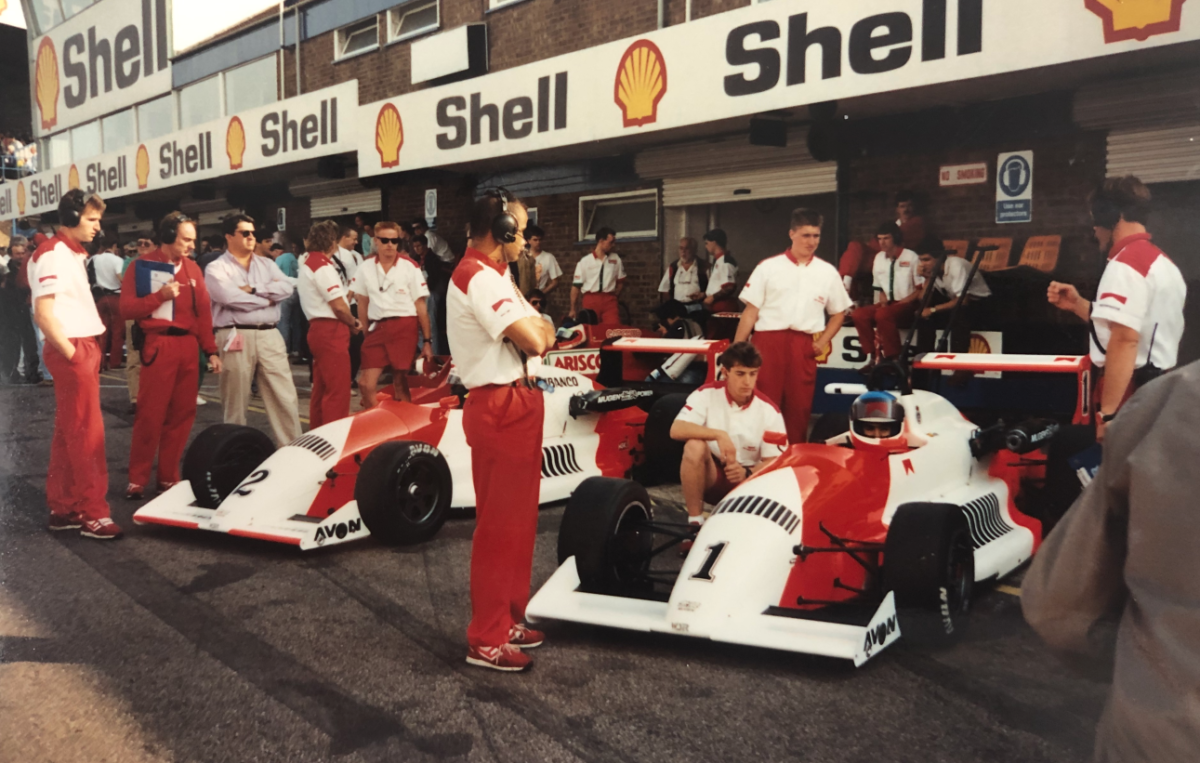
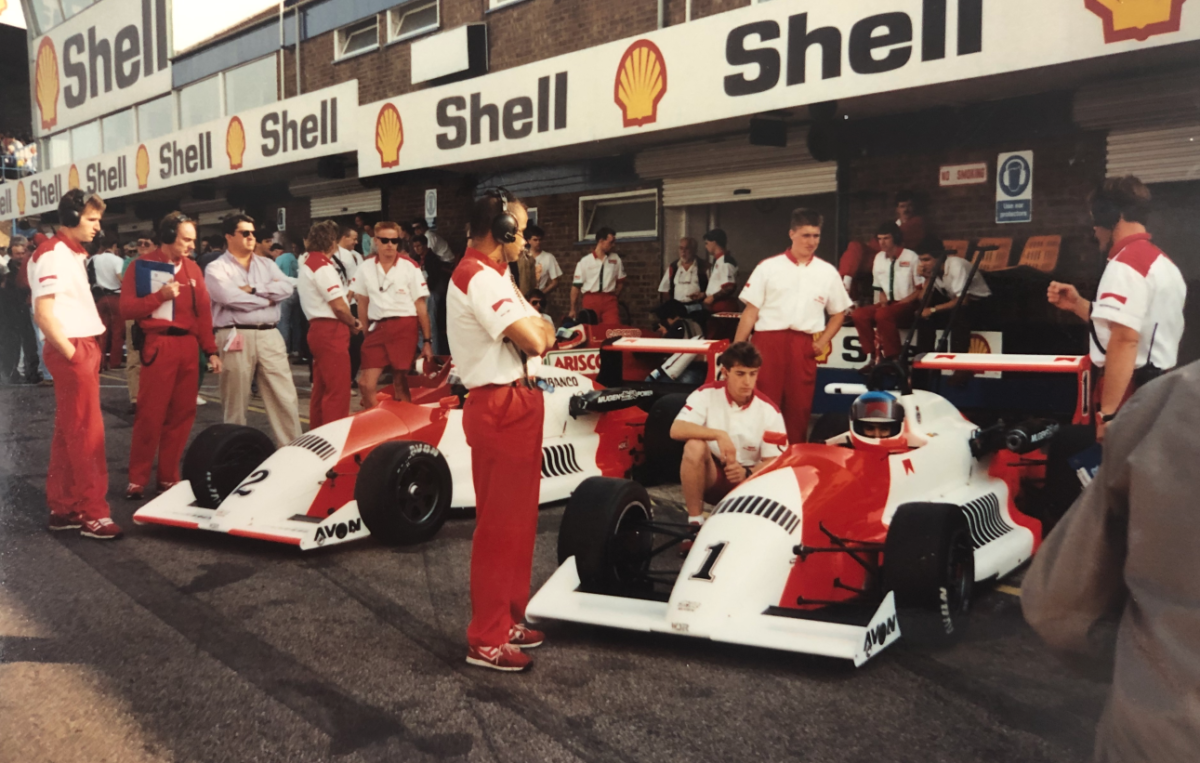
While many will know Paul Cruickshank’s brief time as a Supercars team owner, his career is littered with success at the highest level spanning Australia and the United Kingdom.
A New Zealander by birth, Cruickshank these days calls Melbourne home, where he runs a successful retail automotive business.
He says it’s taken time to adapt his mentality out of the motorsport mindset.
“It’s taken me five years to get my head around running a retail business,” Cruickshank explained to Speedcafe.com.
“I guess at the start I tried to run it like a race team, and it doesn’t actually work like that.
“You can use a lot of things that you learned in the motor racing business but you can’t run it like a motor racing business.
“It’s taken me a few years, but we have got a good little business going along now.”
Cruickshank’s foray into motorsport began as a teenager, knocking about Ashburton with Andy McElrea, Tim Miles, and John Evans.
After racing motocross and playing rugby, he grew tired of ending up injured and looked for a change of tack.
“It all really started with Andy’s father, Rod,” Cruickshank recounted.
“I was doing a bit of motocross racing, but I was finding out I was getting hurt every week, and playing rugby, and so getting hurt every week and I got sick of it.
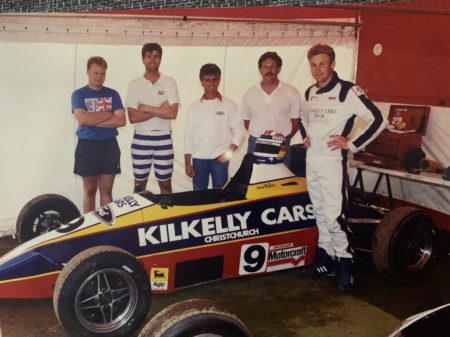
“Rod was quite a big figure in racing in the South Island, and then Andy started doing his racing, and him and Tim were best friends, and also with John Evans.
“I was kind of, I guess, a bit of a ring-in to the whole thing.”
The association with his three friends led to a foray into pre-65 racing and ultimately into a career in motorsport.
During the mid-’80s Andy McElrea headed to the UK, followed by Miles the following year.
Cruickshank’s life saw him head to Australia, originally working for Jim Keogh’s Auto Craft in 1986 at nights while working at a Holden dealership during the day.
He soon found himself tracked down by Leo Leonard who, together with Mark Petch, had just put a deal together to run Robbie Francevic at Bathurst.
With his Volvo deal having fallen apart, Francevic piloted a Ford Sierra XR4, with Cruickshank brought into the fold.
He spent a year with the squad, which included a disastrous Bathurst 1000 before switching to work with Ross Stone at Nissan New Zealand.
“Then, I’d come over here (to Australia) in 1987 properly with Nissan New Zealand, so that’s kind of how it started,” Cruickshank explained.
“We had a two-car team, we had four staff, a truck driver and Ross Stone, so that was the team; Ross was the manager.”
The economic collapse in November 1987 triggered the team’s demise when Kent Baigent and Graeme Bowkett pulled the pin.
“They wound it up at the end of the year, which was a shame because it was a pretty good team, and the cars were going good, and it was potentially a very good little operation, but it got shut down,” Cruickshank reflected.
That led to a spell preparing McElrea’s Ralt RT4, a car described as “the very fourth car in a four-car team”.
Around that time a conversation with Neil Lowe led to an opportunity at Dick Johnson Racing at a time when the squad was on the ascendancy.
“I’d gone over there to do sub-assembly and gearboxes, and the day I started was a test at Lakeside, and they needed someone to look after what was John Bowe’s first day on the job,” Cruickshank said.
“I went out there and looked after his car for the day, and then basically just stayed on his car the whole time I was at DJR.
“Dick’s team was predominantly run by Neil Lowe then,” he added.
“He was a pretty tough taskmaster.
“It was like he certainly had his own ideas on how everything should run.
“Dick pretty much let him run it, and really why wouldn’t he, because we got first and second for just about every race for two years.
“For me, pretty fresh off the boat, really, from NZ, just to go there, and like the first races we went to we were winning races, I just couldn’t believe it.
“It was a really good, tight little team at that time, and I think we had probably 10 or 12 staff.
“Keith Weir, who passed away, who was a pretty good little race mechanic in his own right, especially back then, he was right in his prime.
“John Gray, who’s a legendary fabricator in the industry, was there, so there were a lot of really good guys for me to get advice off.
“I was a bit young and wild back then, so they used to keep me in line pretty well.
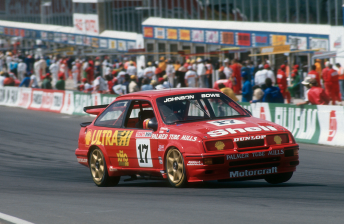
“The highlight was obviously winning Bathurst in ’89, that was an amazing day and it’s still a day I remember pretty clearly.
“There was a fuel stop went wrong at the first stop, there was all these things.
“I mean, the turbo on that car should have popped at about 600 or 700 (kilometres), and it just kept on going and going and going.
“I think it had about 200 horsepower at the end of the race, but we had enough up our sleeve to kind of get through it.”
Cruickshank was also part of the team that travelled to Silverstone where Dick Johnson competed in the RAC TT in September 1988.
Following his time with Dick Johnson Racing came the opportunity to head to the UK courtesy of Dick Bennetts’ West Surrey Racing.
The pair met on New Zealand’s South Island while Cruickshank crewed on McElrea’s car, a conversation which led to a role with WSR for 1991.
“I was number one mechanic on Pedro Diniz’s car for the first year,” he recounted.
“Towards the end of the year, Pedro actually hurt himself at a test in Silverstone, so the last couple of rounds helped on Rubens Barrichello’s car when he won the championship that year.
“I actually went back to New Zealand at the end of that year because I was living with Craig Baird at the time
“I went back with Craig at the end of the year and did the New Zealand Series in his Formula Atlantic car, which was great because we won the New Zealand Grand Prix, won all the races.
“Then I stayed on with him instead of going back to West Surrey Racing, which I had fully planned to.
“He had put a deal together to do the British Formula 3000 series, so I looked after his car that year, which was a Dome Mugen chassis.
“Everyone else had a Reynard with a Cosworth engine at that point.
“It was a shame, really, because it didn’t really work out for Bairdo, and he was way better than what the car showed.”
At the end of 1992, Cruickshank returned to WSR where he worked with Pedro De La Rosa, with whom he remains in contact.
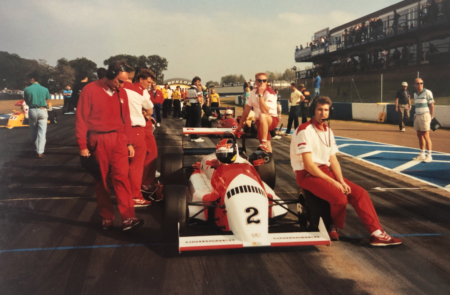
His paths also crossed with Miles too, the pair involved in a serious car crash together with Baird from which he still carries the scars.
“It was the 101 young, dumb boys overseas doing everything wrong,” he revealed.
“Everything that you put a cross against, we were doing that night, and we paid a fairly hefty price for it because Tim and I both got fairly badly injured.
“I still have got some good scars on my femur to prove it.
“We were so, so lucky with what happened because the car actually caught fire, but there was a young kid, and it was right on midnight, and there was a young kid locking up a service station and he picked up a fire extinguisher and come and put it out.
“There was no way Tim and I could have got out of the car, so it was very fortunate.”
His time in the UK saw him take in events in Macau and Japan, though left him short of his dream of Formula 1.
“I really went over there to do Formula 1, but it was pretty hard to get into F1 at that point,” he explained.
“Then, like as things always do, just as I was about to leave, I got offered a couple of jobs.
“But I was kind of done with the whole, I just wanted to get back here.”
Upon his return to Australia there was a spell working with Kevin Waldock’s Playscape Racing before embarking on the ambitious Australian Motorsport Academy with Tony Noske and Alan Jones.
“It was the wrong thing to do,” Cruickshank reflected.
“It just wasn’t a great part of my life, because it promised a lot but there was faults on all sides; some shortcomings from my side, we got let down fairly badly on a few fronts, so that was that.
“I basically stayed there four or five months.
“I always say it was the first job I got sacked from, so left there and felt like a footy coach for a couple of days when you get the boot.”
His time on the sidelines was brief as he swiftly joined Gibson Motorsport, where he would remain from 1995 to 1997.
He started out as Chief Mechanic, but as funding for the former tobacco-rich squad began to dry up his role morphed.
“They went from cigarette money to no money,” Cruickshank said.
“We went from 30-odd staff down to 10, I think; everyone just had to do a little bit of everything.
“It was a shame because I just saw the back end of what Gibson (was), because they were the powerhouse team by then; you could see what they’d done with their GTRs and then on the Commodores. It was a pretty amazing organisation.”
A spell outside of motorsport followed before joining Prancing Horse Racing at the start of 2000.
“I was the first person to be a staff member there, and they had one 360 Ferrari for Mark Noske,” he said.
Business was soon booming as the Ferrari customer programme ramped up.
“I think there was almost 40 people working there,” he explained.
“It was the second biggest race team in Australia in 2001, it was only second behind Walkinshaw’s, I think.
“Out of all the things that I’d been involved with that hadn’t worked, that was probably the one that got away because that business could have been an amazing business.
“There was just too many people got involved with having an influence over the major stakeholders, which was a real shame.
“Tony Raftis originally set it up, (he) was a pretty good bloke.
“He just got led down the garden path with guys who didn’t have his interests at heart, and it really upset me because he put his money where his mouth was.
“Sometimes we were running seven and eight customer Ferraris,” he added.
“We ran nine cars at the Grand Prix in 2002; we had Ryan Briscoe we brought out, and then we had John Bowe, Brad James, Paul Morris.”
There was a Supercars programme too, but it was “too little, too late” according to Cruickshank.
“We should have just gone out and bought a car and painted it red, which is what I actually tried; to get everyone to buy a car off Stone Brothers. That was just before they’d come into their own,” he reasoned.
For 2003, that’s exactly what Cruickshank did as he set up the team that would ultimately take him to the Top 10 Shootout for the Supercheap Bathurst 1000.
Running cars in the Development Series and in Carrera Cup, Cruickshank gradually built the team up ahead of its entry into the premier class for 2006 with Andy McElrea looking after the squad’s Porsche programme from 2004.
“When Andy McElrea had come back from living in America and he was looking for some roles in the sport,” Cruickshank said.
“I got him to run the Porsche side of the business for me. So, basically, we set it up as a joint venture
“It worked out really good; I just did the V8 team, Andy did the Porsche team.
“When we wound the Porsche stuff back a little bit in 2008, Andy actually worked for us as kind of a commercial manager in the V8 side of the business as well.”
Paul Cruickshank Racing’s life as a Supercars cars was, however, fleeting and at the end of 2009 it was all over.
“There were some shortcomings from my end in just terms of being a bit naive at that level, when you think people are telling you the truth, and they’re not really doing that, so that was a bit of a lesson,” he admitted.
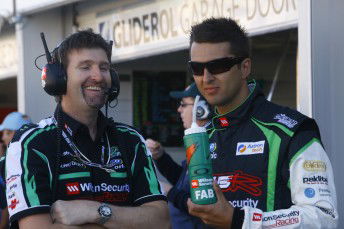
Despite the fate of his team, Cruickshank ranks Fabian Coulthard’s appearance in the Top 10 Shootout at Bathurst in 2008 as the highlight of his career.
“We had a single-car team, we were really on top of our game at that point, and that was probably the strongest that we’d been in Supercars,” he recounted.
“Getting into the shootout with your own team and the little crew of guys we had was pretty amazing.
“Once we got in the shootout I’d kind of gone, ‘You know what? If nothing else happens over the weekend, I don’t really care’.
“To me that was just like, from a childhood thing for motor racing, to actually having your own car sitting there, you get that whole five minutes to yourself kind of thing.
“We had plenty of people there who were looking at what we were doing for the following year.
“It was just a good time to go right, but we just didn’t quite get the end of the weekend quite right, but we went close.”
He also saves special mention for Andy McElrea’s New Zealand Formula Ford Championship, and winning the Lady Wigram Trophy with Craig Baird.
“But look, there’s lots and lots, there’s many things,” he added.
“The buzz with the West Surrey guys when Rubens won the Championship, being strong at Macau and Japan, that was always great because all the German teams were there.
“There’s been lots and lots and lots of highs, and some lows as well.
“So, I guess, for me, when we got out, I suppose that was probably the low because we’d worked pretty hard to get the team where it was.”
Now out of the motorsport spectrum, Cruickshank has remained active within the automotive sector.
He now heads a successful retail business, Total Auto Centre, in Melbourne, not too far from the circuit where he once fielded nine Ferraris.
And while life has taken him down a different path in recent years, he remains firmly under motorsport’s spell.
As for a return to the sport, “If someone came along and wanted a hand to do something, I would go ‘you know what, I could do it’.”




















Discussion about this post